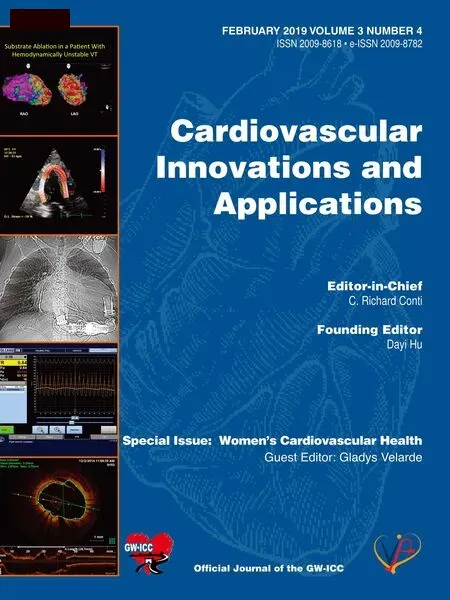AED, LifeVest Defibrillator or Hybrid Approach
2018-03-19RichardContiMDMACC
C. Richard Conti, MD, MACC
Introduction
Early def brillation is critical to survival in any patient with a cardiac arrest. Electrophysiologists who implant ICDs (implantable cardioverter def -brillators) test them by f brillating the patient followed by immediate def brillation. This emphasizes the point that early def brillation results in survival of these patients; CPR is done only if there is a delay in obtaining the def brillator or if the ICD is not working.
The standard practice for out of hospital def brillation is the implantable cardioverter def brillator.However much has been written and discussed about the use of automated external def brillators(AED). Not much has been written about LifeV est wearable def brillators.
Case Presentation
A 21 year old female had sustained ventricular tachycardia requiring external def brillation. When seen by our group, she was alert and oriented with no evidence of heart failure. PVCs were treated with amiodarone and beta-blockers. Cardiac catheterization revealed that left ventricular ejection fraction was less than 50% but her coronary arteries where normal.
Cardiac magnetic resonance imaging (MRI)with gadolinium was performed and showed late enhancement of the mesocardium of the left ventricle. The diagnosis of myocarditis was made and at that point, an automated ICD was recommended but the patient refused. An AED and life vest were then recommended to the patient and she agreed.
What Does an AED Do?
The AED addresses whether or not patients need an electric shock and if they do it predetermines the power level. The user cannot override the determination of the computer so the potential for misuse is minimal.
Community based AEDs, although in many instances can save lives, do not perform as well as those in airports, airplanes or casinos.
LifeVest
The indications for a LifeV est include recent high risk acute myocardial infarction, after high risk coronary bypass graft sur gery or PCI, patients listed for cardiac transplant with ventricular tachycardia and patients with cardiac disease from which they may recover in the new future. In patients with terminal disease and life expectancy less than 1 year,an ICD indication may be indicated but I would recommend that the patient be the one who determines that decision.
Advantages of a LifeVest
If the LifeV est detects a life threatening rhythm,the LifeV est alerts the patient to allow a conscious patient to prevent a shock. If the patient is unconscious the device delivers emer gency def brillation in the form of an electrical shock. The device is essentially a “ Shock Box ” .
Hybrid Approach to Defibrillation
For a patient who has myocarditis or a recent myocardial infarction in which there is a documented episode of sustained VT or VF a hybrid approach to management can be considered, for example a LifeVest and an AED.
A hybrid approach to out of hospital def brillation using an AED and LifeVest def brillator may prove to be acceptable for young patients whose cardiac function may recover in a few months, as might be the case in this patient. Thus, these young patients would not have a lifelong requirement for an ICD.Examples of this type of patient include peripartum cardiomyopathy, viral myocarditis and recent myocardial infarction. The LifeVest should be worn at night and when alone. It could be taken off when the patient is in surroundings where friends and family could use the AED if necessary.
Summary
Early def brillation is critical to survival in any patient with a cardiac arrest. An ICD is still the most reliable method to def brillate the patient with out of hospital cardiac arrest. Community based AEDs although in many instances can save lives do not perform as well as those in airports, airplanes or casinos. A hybrid approach to out of hospital def brillation using an AED and LifeVest def -brillator may prove to be acceptable for young patients whose cardiac function may recover in a few months. Thus, these young patients would not have to have a lifelong requirement for an ICD.However, if cardiac function does not improve, an ICD is recommended.
